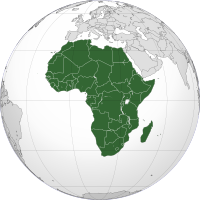
Photo from wikipedia
The emergence of complex society is a milestone in the history of human society evolution. China is one of the few regions in the world where the earliest complex society… Click to show full abstract
The emergence of complex society is a milestone in the history of human society evolution. China is one of the few regions in the world where the earliest complex society appeared; however, its driving mechanisms remain unresolved. On the base of available evidence from both archaeology and Holocene climate, in combination with agency theory, this study attempts to address the driving mechanisms for the simultaneous emergence of complex societies in multiple areas of China around 5.5 cal ka BP. It is hypothesized that three factors, including climate change, population growth, and circumscription, jointly act and cause regional population-resource imbalance and trigger inter-group conflicts and wars. Such competitions provide the opportunity for some power-pursuing agents to break the restriction of social leveling mechanism and to become the centralized decision-making leaders, which further lead to the emergence of incipient large-scale complex societies. Increase in extreme climate events during 6.0–5.0 cal ka BP cooling period causes frequent occurrence of resource stress and increase in the frequency of inter-group competitions, which creates conditions for the legitimation, institutionalization, and persistence of centralized leadership, and finally leads to the formation of persistent institutionalized inequity. Our research result can explain not only the process and mechanism of complex society formation, but also two phenomena which cannot be reasonably explained by previous theories, that are, why the earliest complex societies in China emerge around 5.5 cal ka BP, and why they appear simultaneously in multiple regions.
Journal Title: Science China Earth Sciences
Year Published: 2017
Link to full text (if available)
Share on Social Media: Sign Up to like & get
recommendations!